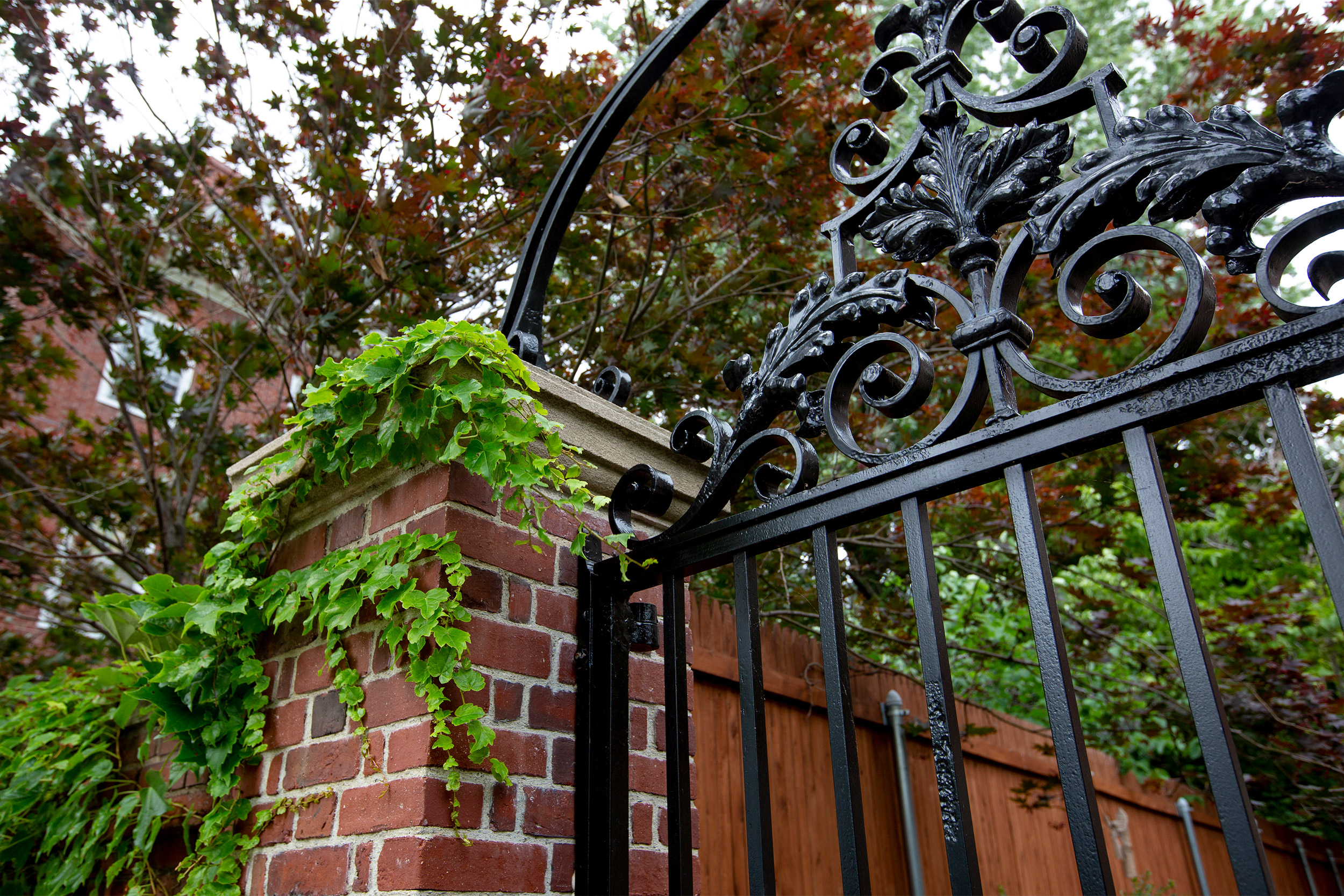
The gate by Standish Hall at Harvard University.
Photo by Jenna Lang
Class of 2024 yield drops marginally
COVID-19 fears leave some students opting to defer until 2025
On May 1, the traditional reply date for newly admitted students, nearly 84 percent of those accepted to the Class of 2024 indicated they would be coming to Harvard in August — the highest yield since the early 1970s.
But with the impact of COVID-19, that yield has dropped to 81 percent as a number of students asked to defer their admission to the Class of 2025. The yield for the Class of 2023 was 82.1 percent. A small number of students have been admitted from the waiting list so far. The admissions year will conclude by the end of July.
“The Class of 2024 is comprised of so many of the nation’s and world’s promising students,” said William R. Fitzsimmons, dean of admissions and financial aid. “We are delighted that they have chosen Harvard for their undergraduate experiences, and we look forward to seeing all they accomplish in their years here.”
Students with the Undergraduate Admissions Council, Undergraduate Minority Recruitment Program, Harvard Financial Aid Initiative, Harvard First Generation Program, and Harvard College Connection continued their annual recruitment efforts this year by calling and emailing applicants to answer questions and highlight specific opportunities: 130-plus freshman seminars; a robust support system that provides more than 400 first-year advisers, 200 peer advising fellows, and 60 resident proctors; research opportunities with close faculty collaboration; 49 newly created secondary fields; and a revised General Education program.
Financial aid was a crucial consideration for a large number of those enrolling in the Class of 2024. More than half the entering class applied for financial aid; 22.4 percent qualified for the low-income portion of the Harvard Financial Aid Initiative; and 26.0 percent requested application fee waivers.
Over the past year, Harvard spent more than $200 million on undergraduate financial aid. One in five Harvard families has an annual income of less than $65,000 and pays nothing toward the cost of their student’s education. Families with incomes up to $150,000 with typical assets pay 10 percent or less of their annual incomes, and many with higher incomes also qualify for assistance depending on individual circumstances. The families of Harvard students receiving need-based financial aid pay an average of only $12,000, and students are never required to take out loans to cover the cost of their education.
Harvard is committed to ensuring that all students take full advantage of their College experience. In addition to grants to cover the basic cost of attendance, Harvard provides more than $6 million a year in additional funding to students, supporting everything from winter coats to music lessons to studying abroad to public service internships to laboratory research experiences. Students with the least assets also receive a $2,000 “start-up” grant to help ease their transition to the College and allow them to explore the vast opportunities available.
In addition, earlier this year Harvard announced it would expand its financial aid program by eliminating from aid awards the summer work expectation beginning in the 2020–21 academic year. Students still will be expected to contribute $3,500 through term-time work to meet their estimated personal expenses. The Faculty of Arts and Sciences is investing an estimated $2 million to fund the program expansion. The goal is to provide aided students with more flexibility to pursue academic, public service, or internship opportunities during the summer.
At this time, women and men comprise about 51.8 and 48.2 percent of the class, respectively. Prospective social science concentrators constitute 27.0 percent of the new first-year students; 19.9 percent are interested in the biological sciences; 15.1 percent in the humanities; 9.5 percent in engineering; 6.8 percent in computer science; 7.4 percent in the physical sciences; 7.0 percent in mathematics, and 7.2 percent are undecided. Asian Americans make up 24.6 percent of the class; African Americans 13.9; Latinx 11.8 percent; and Native Americans and Native Hawaiians 2.0 percent. International students constitute 11.5 percent of the class. Geographical origins of the Class of 2024 are similar to last year’s class. First-generation college students make up 18.7 percent of the class.
Twelve veterans and 34 students who expressed an interest in ROTC are among the members of the class. In recent years, Harvard has increased efforts to recruit individuals who have served in the U.S. military, working with the Defense Department, joining Service to School’s Vetlink program in 2017, and conducting outreach via community college centers for veterans.




